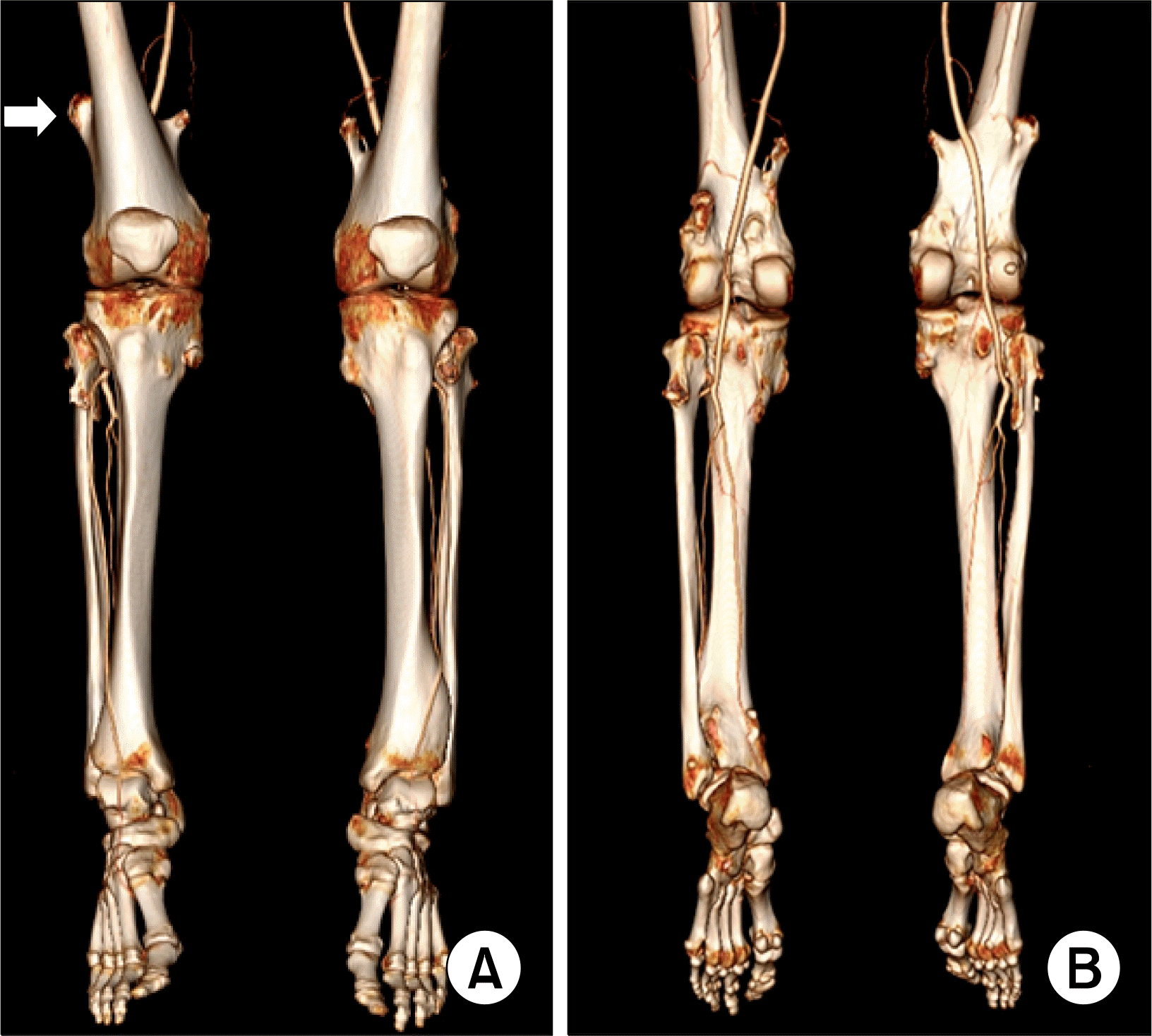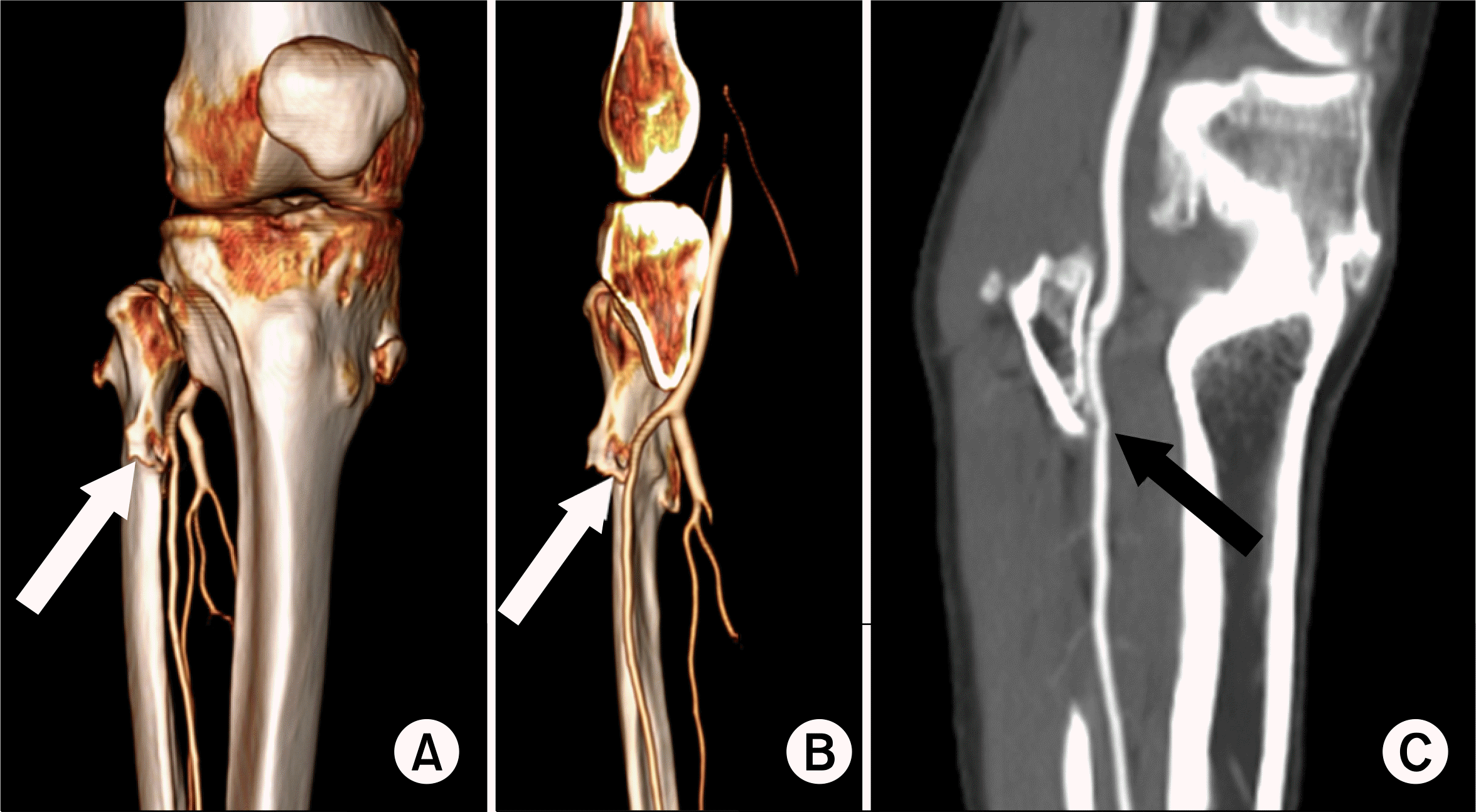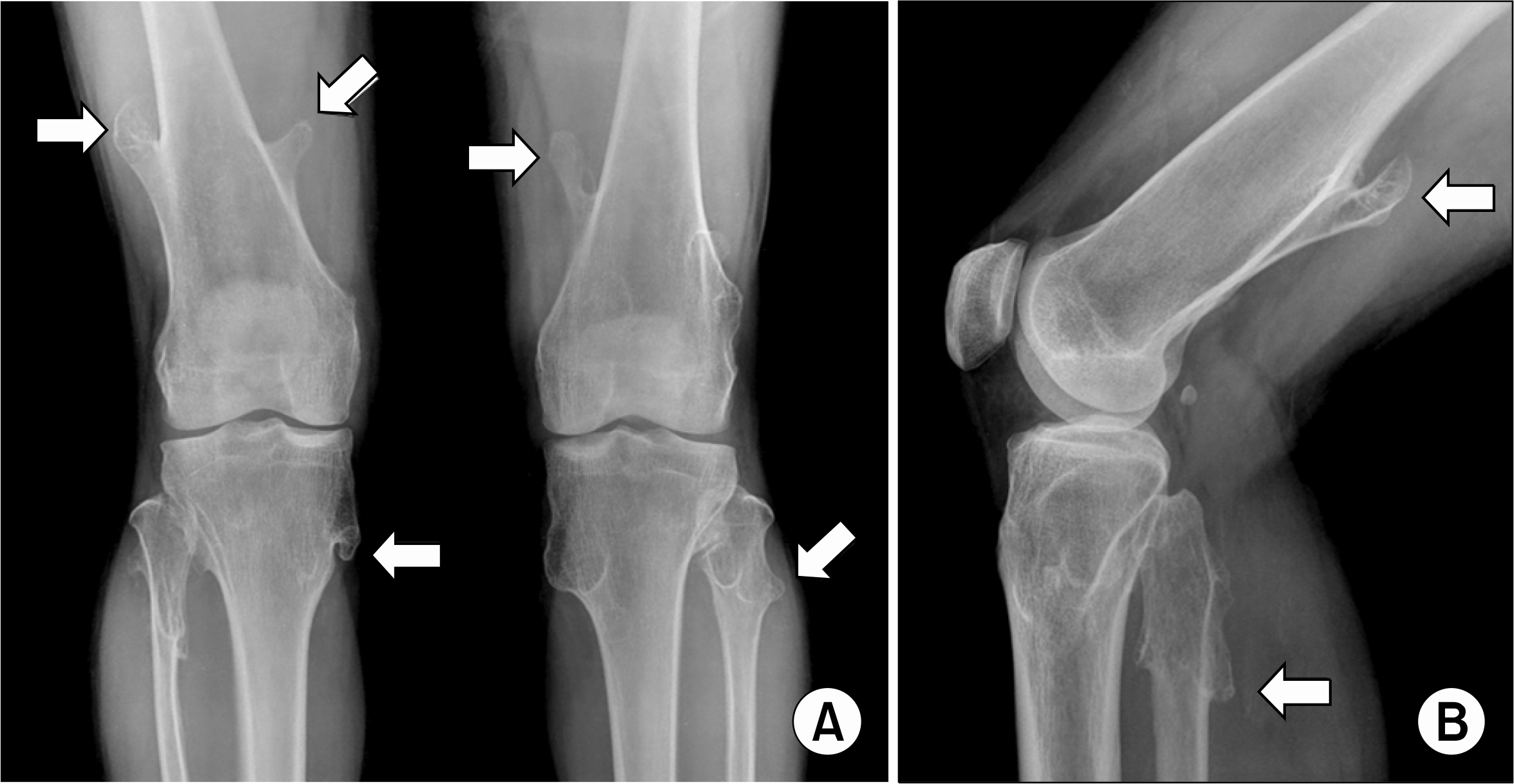References
1. Pannier S, Legeai-Mallet L. Hereditary multiple exostosis and enchondromatosis. Best Pract Res Clin Rheumatol. 2008; 22:45–54.
2. Schmale GA, Conrad EU, Raskind WH. The natural history of hereditary multiple exostoses. J Bone Joint Surg Am. 1994; 76:986–92.

3. Francannet C, Cohen-Tanugi A, Le Merrer M, Mu-nnich A, Bonaventure J, Legeai-Mallet L. Genotype-phenotype correlation in hereditary multiple exostoses. J Med Genet. 2001; 38:430–4.

Fig. 2.
CT angiography of lower extremities. Anterior (A) and posterior (B) views of volume rendering images show multiple osteochondromas about knees and ankles of both lower legs.

Fig. 3.
CT angiography of lower extremities. On volume rendering images (A, B), proximal segment of the right anterior tibial artery courses around an osteochondroma (arrow) arising from proximal fibula. Curved MPR image (C) shows angulation of the anterior tibial artery (arrow) caused by an osteochondroma.





 PDF
PDF ePub
ePub Citation
Citation Print
Print



 XML Download
XML Download